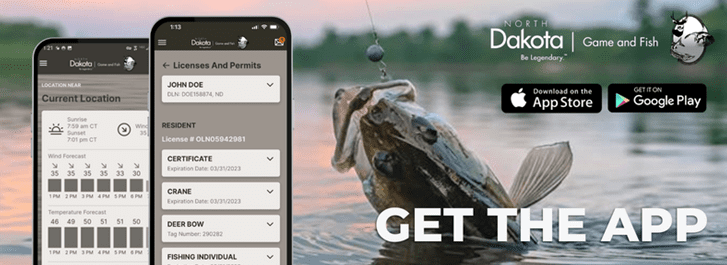

ND Game and Fish Department
The North Dakota Game and Fish Department’s 76th annual spring breeding duck survey conducted in May showed an index of more than 3.4 million birds, up just 1.5% from last year.
And like last year, the breeding duck index for 2023 was the 23rd highest on record and stands at 39% above the long-term (1948-2022) average, according to Mike Szymanski, migratory game bird supervisor.
“As with all May waterfowl surveys, we are counting what remains of last year’s fall flight. After a modest production year last year, duck numbers were flat relative to responses that are more typical with abundant water on the landscape,” Szymanski said. “Moreover, a large decrease in the number of ducks observed in areas with good wetland conditions (i.e., the Drift Prairie) is emblematic of a broader population that has declined overall. Such observations may be more typical as prospects for large fall flights decline from those of the 1994 to 2016 time period.”
The number of total wetlands was down 26% from last year and 76% above the 1948-2023 average. The water index is based on basins with water and does not necessarily represent the amount of water contained in wetlands or the type of wetlands represented.
“This is the seventh wettest spring in terms of wet basins on record, following our second wettest survey last year,” Szymanski said. “The prairie wetland ecosystem is highly dynamic, which is evidenced by the last few years bouncing between wet and dry conditions. Whether wet or not, waterfowl resources continue to decline in the state due to diminished reproductive potential, limited by secure nesting cover.”
Indices for most individual species, except for blue-winged teal, mallards and scaup increased from 2022. Mallards were down 9.8% from 2022 and represented the 27th highest count on record. The green-winged teal index increased 71%, wigeon and pintails increased 58% and 47%, respectively, and other increases ranged from 12% for shovelers to 19% for canvasbacks. Decreases from the 2022 index were observed for scaup (-23%), mallards (-9.8%) and blue-winged teal (-4.4%).
Pintails, a species of management concern, appeared to be responding to excellent nesting conditions where available, Szymanski said. These birds have struggled continentally and it’s good to see them respond to good habitat conditions in the state, he added.
“Breeding duck numbers in North Dakota generally trend with wetland conditions. After a nominal increase, the overall number of ducks is still above the 75-year average, but 15% below the 1994-2016 average,” Szymanski said. “Breeding duck indices above 4 million in the state will be unlikely, even during the wettest years, unless our upland nesting habitats improve. The Dakotas will no longer be able to consistently buoy midcontinent duck populations without large numbers of acres of secure nesting cover on the landscape in the form of perennial grasses provided by programs like CRP.”
Szymanski added that the estimated number of Canada geese (297,914) in North Dakota during the May 2023 survey was down 23% from the 2022 estimate, which was a record.
“Canada goose nesting efforts appeared to be reduced and delayed as few Canada goose broods and lower than normal numbers of nests were observed on the survey,” he added. “There were many pairs and small groups of Canada geese observed during the survey on territories. Pairs may have simply been delayed, but some flooding of nests occurred during early May in areas with 4 to 8 inches of rainfall during active nesting.”
Anglers should note that live white suckers are not legal baitfish in North Dakota, except in the Bois de Sioux and Red rivers.
Anglers can use live white suckers on the Bois de Sioux and Red rivers, and tributaries up to the first vehicular bridge; however, they are illegal elsewhere. Fathead minnows, sticklebacks and creek chubs are the only legal live baitfish outside of the Bois de Sioux and Red rivers.
The transportation of live white suckers, other than in Richland, Cass, Traill, Grand Forks, Walsh and Pembina counties, is illegal.
In addition, it is illegal for anglers to import minnows and other forms of live aquatic bait, such as leeches and frogs, into North Dakota.
When purchasing live aquatic bait, anglers must buy from a licensed North Dakota retail bait vendor. Bait vendors can properly identify species and ensure all bait is clean of any aquatic nuisance species.
For more information, refer to the 2022-24 North Dakota Fishing Guide, available at license vendors or online at the state Game and Fish Department website, gf.nd.gov.
The North Dakota Game and Fish Department encourages boaters to plan accordingly when launching and loading a boat. Here are a few simple reminders to ensure a fluent transition at the ramp.
Launching
Loading
Get clear of the ramp. Pull into the parking area to finish securing your boat, unload gear, drain all water and inspect for and removing any vegetation. Remember to leave plugs out when transporting your boat.